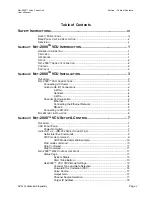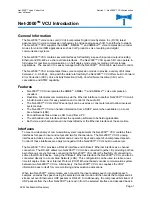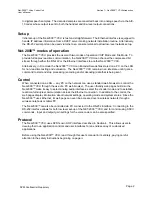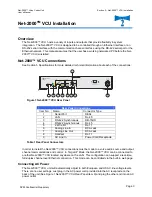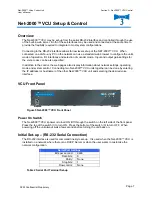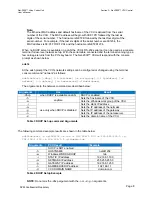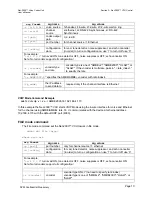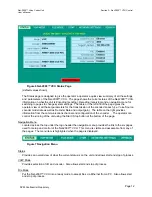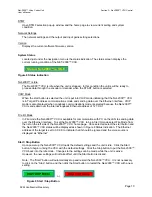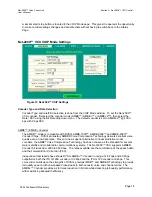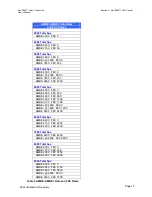
Net-2000™ Voice Codec Unit
User’s Manual
Page 11
Section 3 – Net-2000™ VCU Control
DVSI Confidential Proprietary
NOTE: FILE mode implies that both the voice and channel interfaces are Ethernet. Since the rate
information is always in the packet, there is no need to specify the rate index for multi-rate vocoders.
Stop Command
The Stop command works for either mode and sets the Net-2000™ VCU to IDLE
adsh> dut stop
Change Vocoder Configuration:
adsh> dut config [config]
[config]
are the same 1 or 0 values used in the
"-d [config]" arg
for voip or
file mode
Send Tones Command
adsh> dut tone [-te or-td] [tone_args]
where args are
"-te" or "-td".
[enc_or_dec]
Either "-te" or "-td". "-te" means override the speech input
and have the encoder send the tones in-band to the other
net2k "-td" means override the input channel data and have
the decoder generate the tones locally.
[tone_args]
an ascii string of digits and the upper-case letters [A-F]
representing the DTMF tone to generate
Stop Command
To use the stop command at the
adsh>
prompt type
dut stop
The Net-2000™ VCU responds with Stop OK and packets information
Net-2000™ Web Control Interface
Status Page
The Net-2000™ VCU can be controlled remotely by accessing the unit’s built-in web server using a
PC’s web browser as the graphical user interface. To connect to the Net-2000™ VCU web server
home page, first open up the web browser software on a PC and type the IP address (or hostname if
the LAN has a name server) of the VCU you want to control in the URL address bar. The VCU web
server will respond with the VCU Status Page as shown in Figure 6 Net-2000™ VCU Status Page.
The Net-2000™ VCU’s built-in web server provides I/O configuration, system control, information
about the operational mode and network settings.

